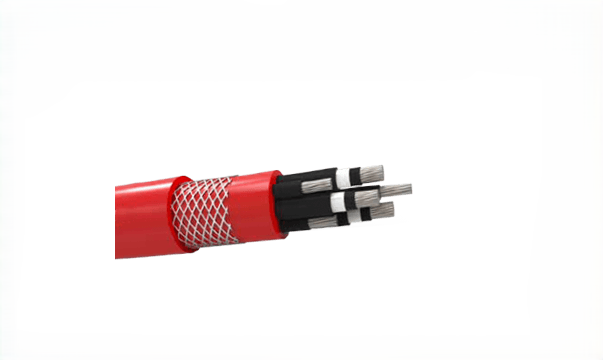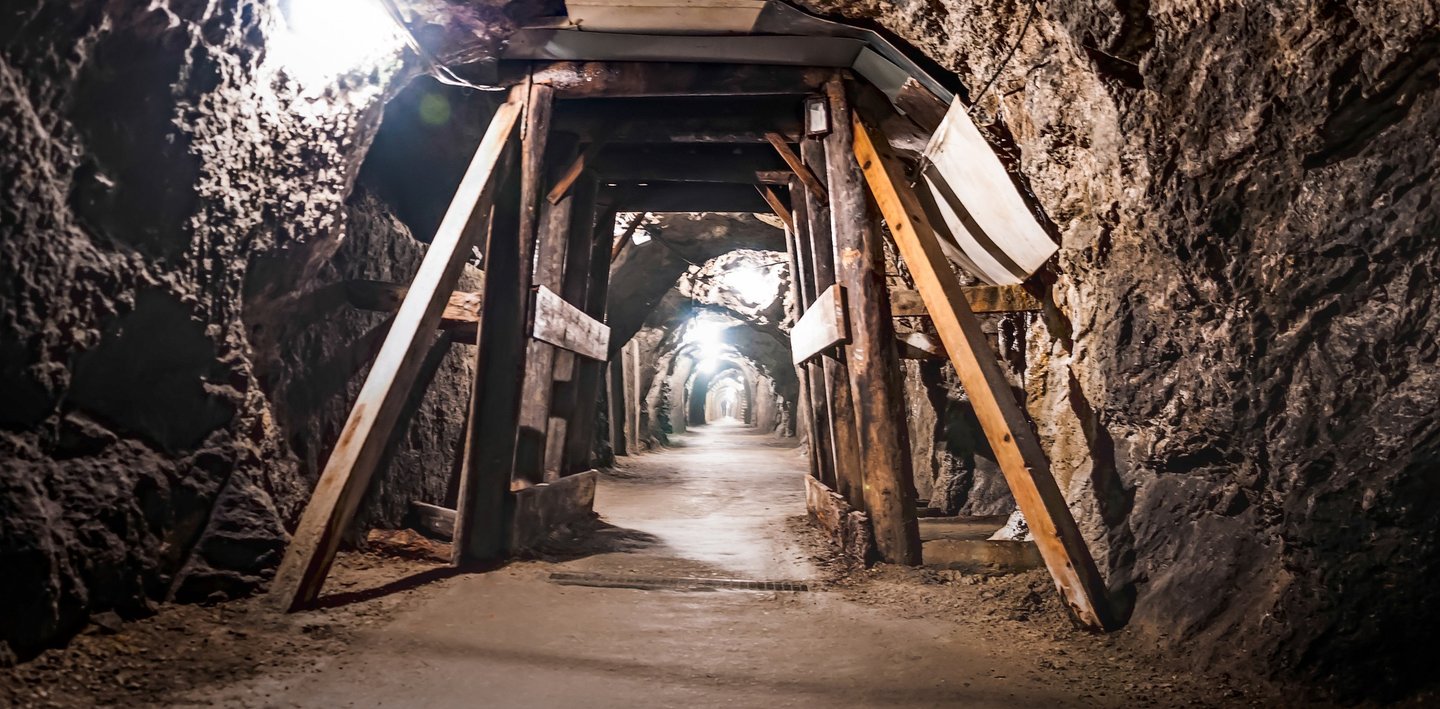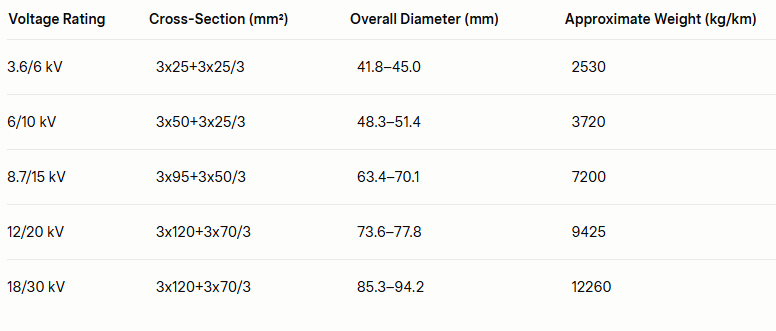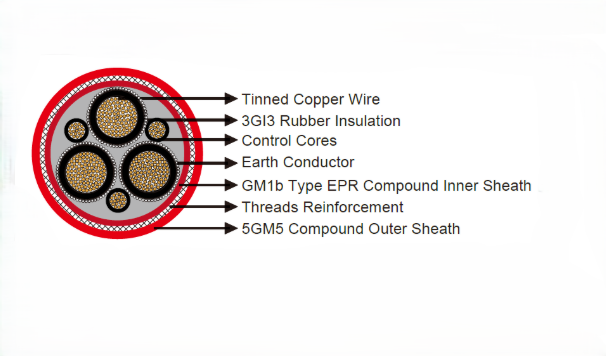NTSCGEWÖU Mining Cables
Deep beneath the earth’s surface or across sprawling open-pit mines, the extraction of valuable minerals demands a reliable power supply to keep operations running smoothly. Mining is an energy-intensive industry, powering everything from massive excavators to critical ventilation systems. Any disruption in power can lead to costly downtime or safety hazards, making robust electrical infrastructure vital. Enter the NTSCGEWÖU mining cable, a specialized solution designed to deliver consistent power in the harshest conditions. These cables are engineered for flexibility, durability, and resistance to environmental challenges like water, oil, and mechanical stress, making them indispensable for mining and tunneling operations worldwide, including Australia’s thriving mining sector. This article delves into the applications, electrical specifications, construction, and common questions about NTSCGEWÖU mining cables, offering insights for mining professionals and enthusiasts alike to understand their role in ensuring safe and efficient operations.
5/23/20255 min read
NTSCGEWÖU Mining Cables
Introduction
Deep beneath the earth’s surface or across sprawling open-pit mines, the extraction of valuable minerals demands a reliable power supply to keep operations running smoothly. Mining is an energy-intensive industry, powering everything from massive excavators to critical ventilation systems. Any disruption in power can lead to costly downtime or safety hazards, making robust electrical infrastructure vital. Enter the NTSCGEWÖU mining cable, a specialized solution designed to deliver consistent power in the harshest conditions. These cables are engineered for flexibility, durability, and resistance to environmental challenges like water, oil, and mechanical stress, making them indispensable for mining and tunneling operations worldwide, including Australia’s thriving mining sector.
This article delves into the applications, electrical specifications, construction, and common questions about NTSCGEWÖU mining cables, offering insights for mining professionals and enthusiasts alike to understand their role in ensuring safe and efficient operations.


Applications of NTSCGEWÖU Mining Cable
Primary Use Cases
NTSCGEWÖU mining cables are primarily used to connect heavy electrical equipment in mining and tunneling environments. They power large, mobile machinery such as excavators, cranes, dumpers, and pumps, which are critical for extracting and transporting minerals. The cables’ flexible design allows them to accommodate the constant movement of these machines, ensuring a steady power supply even during dynamic operations. For example, in underground mines, these cables connect drilling jumbos and continuous miners, while in open-pit mines, they support draglines and conveyor systems .
Environmental Suitability
Mining environments are notoriously harsh, with exposure to water, oil, dust, and mechanical abrasion. NTSCGEWÖU cables are built to thrive in these conditions. They can operate in waterlogged settings, including sewage, salt, and brackish water, at depths up to 500 metres, making them ideal for applications like powering submersible pumps or dredgers in open-pit mines . Their robust construction also withstands mechanical stresses, such as twisting and bending, which are common when cables are dragged or reeled during equipment movement. Whether in the confined spaces of underground tunnels or the exposed conditions of surface mines, these cables ensure reliable performance.


Electrical Parameters
NTSCGEWÖU mining cables are available in a range of voltage ratings to meet diverse power requirements in mining operations. These include:
3.6/6 kV
6/10 kV
8.7/15 kV
12/20 kV
18/30 kV
Each cable is rigorously tested to ensure safety and performance, with AC test voltages ranging from 11 kV to 43 kV, depending on the voltage class. For instance, a 6/10 kV cable undergoes a 17 kV AC test, while an 18/30 kV cable is tested at 43 kV .
The cables are designed to operate in extreme temperatures:
Fixed installations: -40°C to +80°C
Mobile applications: -25°C to +80°C
Their mechanical characteristics further enhance their suitability for mining:
Maximum tensile load: 15 N/mm², allowing them to withstand pulling forces.
Maximum torsion: 25°/m, accommodating twisting without damage.
Minimum bending radius: As per DIN VDE 0298, Part 3, ensuring safe installation without compromising integrity.
The cables are available in various sizes to suit different power needs. For example, a 6/10 kV cable with a cross-section of 3x50+3x25/3 mm² has an overall diameter of 48.3–51.4 mm and weighs approximately 3720 kg/km. Detailed specifications for other sizes and voltage ratings are available from manufacturers (Power and Cables).


Cable Construction
The NTSCGEWÖU mining cable’s construction is meticulously engineered for durability and performance in demanding environments. Key components include:
Conductor: Electrolytic, stranded, tinned copper wire (DIN VDE 0295 Class 5), offering excellent flexibility and conductivity.
Insulation: 3GI3 type EPR (Ethylene Propylene Rubber) compound, known for its superior electrical properties and resistance to heat and chemicals.
Electrical Field Control: Inner and outer semiconductive layers of semiconductive rubber manage electrical stress and prevent partial discharges.
Protective-Earth Conductor: Tinned copper conductor with a semiconductive layer, ensuring safe grounding.
Sheathing:
Inner Sheath: GM1b type EPR compound for added protection.
Outer Sheath: 5GM5 type elastomer compound, typically red in colour, providing resistance to environmental factors.
Reinforcement: Embedded braid of anti-torsion synthetic threads enhances mechanical strength and resistance to twisting forces.
This construction ensures the cables can endure the mechanical and environmental challenges of mining while maintaining reliable power delivery



Frequently Asked Questions (FAQ)
What makes NTSCGEWÖU cables suitable for mining applications?
Their robust construction, including tinned copper conductors, EPR insulation, and reinforced sheathing, allows them to withstand mechanical stresses, water, oil, and other harsh conditions typical in mining operations. The anti-torsion braid and flexible design ensure they can handle the dynamic movements of heavy machinery.
Can these cables be used in waterlogged environments?
Yes, NTSCGEWÖU cables are designed to operate in water, including sewage, salt, and brackish water, at depths up to 500 metres, making them ideal for applications like submersible pumps or dredgers .
What standards do these cables comply with?
They are constructed according to DIN VDE 0250-813 and meet additional standards for electrical (DIN VDE 0472-501, 503, 508) and non-electrical tests (DIN VDE 0472-401, 402, 602, 303, 615), as well as flame-retardant and oil-resistant standards (VDE 0482-332-1-2, IEC 60332-1, HD/EN/IEC 60811-2-1).
How do I select the appropriate cable size for my application?
Selection depends on voltage requirements, current carrying capacity, and environmental conditions. For example, a 12/20 kV cable with a 3x70+3x35/3 mm² cross-section suits high-power applications. Consulting a cable specialist is recommended to ensure optimal performance .
Are there variants of NTSCGEWÖU cables with additional features?
Yes, some variants, like the (N)TSCGEWÖU FO, include fibre optic elements for data transmission, enabling real-time monitoring and communication in modern mining operations, enhancing efficiency and safety .
Conclusion
NTSCGEWÖU mining cables are critical for ensuring safe and efficient power distribution in the challenging environments of mining and tunneling operations. Their advanced construction—combining flexible tinned copper conductors, durable EPR insulation, and anti-torsion reinforcement—makes them a reliable choice for powering heavy equipment in both underground and open-pit mines. Their ability to operate in extreme conditions, including water depths up to 500 metres, further underscores their versatility.
Understanding the applications, electrical parameters, and construction of these cables is essential for mining professionals aiming to optimize operational efficiency and safety. By selecting the appropriate NTSCGEWÖU cable and ensuring compliance with international standards, such as DIN VDE 0250-813, mining operations can minimize downtime and enhance productivity. As the mining industry evolves, incorporating technologies like fibre optic data transmission, these cables will continue to play a pivotal role in powering Australia’s and the world’s resource extraction efforts.


